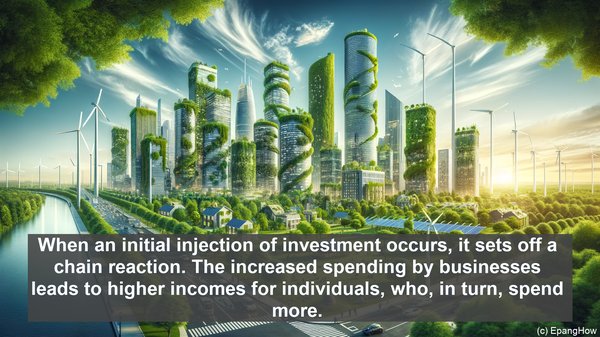Introduction: The Interplay of Factors in Macroeconomics
Before we dive into the specifics, let’s establish the significance of the investment multiplier and the accelerator in the broader context of macroeconomics. Macroeconomics deals with the study of the overall behavior and performance of an economy, focusing on factors such as GDP, inflation, and employment. Within this framework, the investment multiplier and the accelerator play pivotal roles in shaping the economic trajectory.
The Investment Multiplier: A Catalyst for Economic Growth
The investment multiplier refers to the concept that a change in investment spending can have a magnified effect on the overall level of economic activity. It operates on the principle of induced spending. When an initial injection of investment occurs, it sets off a chain reaction. The increased spending by businesses leads to higher incomes for individuals, who, in turn, spend more. This cycle continues, resulting in a cumulative increase in economic output. The investment multiplier is a key driver of economic growth, as it amplifies the impact of initial investments.
The Accelerator: Linking Investment and Output
While the investment multiplier focuses on the impact of investment on the overall economy, the accelerator delves into the relationship between investment and output. It posits that changes in the rate of investment can lead to a proportionate change in the rate of output. The accelerator effect is based on the idea that an increase in investment creates a demand for capital goods, such as machinery and equipment, which, in turn, drives up production. Conversely, a decrease in investment can lead to a contraction in output. The accelerator effect highlights the interdependence of investment and output in the economy.

Distinguishing Factors: Time and Magnitude
While both the investment multiplier and the accelerator are linked to investment, they differ in terms of the time frame and magnitude of their effects. The investment multiplier operates over a longer period, with its impact being cumulative and spread out. In contrast, the accelerator effect is more immediate, with changes in investment leading to relatively rapid changes in output. Additionally, the investment multiplier has a multiplying effect, meaning the final impact is greater than the initial investment. The accelerator, on the other hand, has a proportional effect, with changes in investment directly influencing output.
Implications for Economic Policy and Stability
Understanding the dynamics of the investment multiplier and the accelerator is crucial for policymakers. By manipulating investment levels, governments can influence both short-term output and long-term growth. However, it’s essential to strike a balance. Sudden changes in investment can lead to economic instability, as seen in the case of boom-bust cycles. Therefore, a nuanced approach, considering the interplay of various factors, is necessary. Additionally, external factors, such as global economic conditions, can also impact the effectiveness of these mechanisms.

